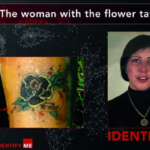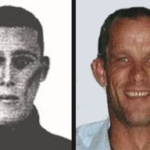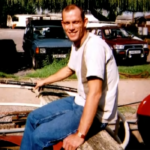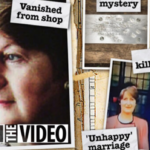The NYE is proud to publish this tribute to the eminent pathologist Professor Mike Green, who supported the NYE’s journalism with advice on the medical aspects of some of the cases Chris Clark and Tim Hicks have covered in their articles.
Obituary: Mike Green
by TIM HICKS and CHRIS CLARK
~~~~~
Chris writes:
“It is with deep sadness that I only found out today via The Times Obituary, that my friend retired pathologist Professor Mike Green Emeritus Professor of Forensic Pathology at the University of Sheffield died on the 26th of November 2020, aged 82, after a long illness bravely borne.
I had been in e-mail communication with him for a number of years on various topics, including The Yorkshire Ripper and the attacks on Barbara Mayo, Jacqueline Ansell-Lamb, Marie Burke, Gloria Booth, Judith Roberts, Carol Wilkinson, Yvonne Pearson, Wendy Sewell, Rosina Hilliard, Caroline Allen and Lindsay Jo Rimer. He was always helpful and had an encyclopaedic knowledge of the medical facts and circumstances of these cases.”
His last message to me before he became too ill to correspond was:
“Good luck with Rimer – still unsolved
Mike g’”
Tim and I are still trying to progress this case.”
Tim writes:
“I corresponded with Professor Mike Green on a number of occasions concerning the murder of “Hope”, more popularly known as the “Nude in the Nettles” murder. Mike had been the original pathologist on the case and worked with Detective Chief Superintendent Strickland-Carter, Head of North Yorkshire Police CID and the Senior Investigating Officer on the case.
We also worked together on articles on the murders of Lindsay Jo Rimer and Ann Heron. I found Mike to be a very helpful and scrupulously courteous man who had a wide range of skills. He had a gift for making complex medical matters very clear to the layman and his determination to carry on trying to progress the unsolved murders, even though he was retired. He understood the need to work with the media to keep these cases in the public eye in the hope of obtaining a resolution. It was a great pleasure to correspond with him.
As well as being one of the leading pathologists of his generation, he was also inherently enquiring, a natural detective and had a very wide skill base. It was Mike that identified in 1981 the approximate date of death of “Hope” -whose body had lain undiscovered for two years and been disturbed by animals by assessing the plant growth around the body. He recalled in correspondence with me:
“I couldn’t date it accurately, but there were two seasons of plant growth, which gave me an estimate – but based on surroundings not the body’s condition. Please feel free to use my comments in your piece – please let me see it in due course.”
His assessment of August 1979 as the date of death was subsequently confirmed as accurate, when a jockey came forward to police and confirmed that he had noticed a foul smell coming from the thicket where the body was hidden while exercising a horse in August 1979.
After examining Anna Rogulskyi and Olive Smelt who had been attacked and beaten over the back of the head and slashed with a knife in the stomach. Mike immediately identified the similarities in their wounds and in the method of attack. He concluded that the same man was responsible. The first indicator that a serial killer -Yorkshire Ripper Peter Sutcliffe- was attacking women in West Yorkshire.
This was the beginning of the end for Sutcliffe, because Mike’s deduction led to enormous resources being allocated to tracing him. For this reason I used the very famous photograph of him (Top left) with the other pathologist on the case Professor David Gee (Centre) and the final leader of the Yorkshire Ripper Investigation Assistant Chief Constable Jim Hobson of West Yorkshire Police (Top Right) to illustrate the article.
I also admired him for his work on “cot deaths”. His work helped free innocent mother Sally Clark, who had been wrongly convicted of murdering her two small children. Her acquittal subsequently led to the acquittal of Donna Anthony, Angela Cannings and Trupti Patel over similar charges. A home office pathologist was found guilty of serious professional misconduct and Professor Sir Roy Meadow Professor of Paediatrics at the University of Leeds was struck off as a result of the case. Mike’s later work ensured that the way these tragic cases were investigated was reformed.
The Times published an exceptionally well written obituary, which the NYE is proud to reproduce below. It describes a wonderful life of a very successful and capable man, devoted to the public service and doing good, whom I was proud to know and work with.”
Obituary: Professor Michael Green. Tuesday, December 29, 2020, 12.01am, The Times
Flying doctor turned forensic pathologist who was first to make the link between victims in the Yorkshire Ripper case
In the summer of 1975, Michael Green was working as a senior lecturer at Leeds University’s forensic pathology department. He was frequently called in by police forces across Yorkshire in the event of a suspicious death or serious injury. One case involved a 37-year-old female hospital patient called Anna Rogulskyj who had survived a night-time attack from behind in an alleyway in Keighley by someone armed with a hammer. She suffered head injuries and superficial slash wounds to her body.
Five weeks later Green examined another hospital patient, Olive Smelt, 46, who had also been attacked from behind. She too had serious head injuries and abrasions across her stomach caused by a knife. These similar injuries led Green to tell West Yorkshire police that the two assaults were almost certainly connected. He was right. They turned out to be the first known attacks by the man who was later referred to as the Yorkshire Ripper.
On October 30, Peter Sutcliffe murdered Wilma McCann, a mother of four who was working as a prostitute in Leeds. A second sex worker was killed a few months later. It was clear to Green that the same method of attacking from behind with a hammer had been used in both these cases and that there was now a serial killer at large in Yorkshire. “You have to draw on your experience,” Green recalled in a documentary about Sutcliffe that was shown on Netflix in 2020. “You have to conclude that whoever was committing these crimes was disturbed to a considerable degree.”
The trouble was that, because the two earlier victims who had survived had not been working as prostitutes, the police were reluctant to include them in their subsequent investigations. Those victims did not seem to fit the pattern the police thought they were seeing.
By April 1978 seven women had been murdered, all clearly by the same hand, and not all of them were prostitutes. Only then did the police set up a review team, which finally took heed of Green’s warning and decided that both Rogulskyj and Smelt had been early victims of the serial killer and had narrowly escaped with their lives.
The critical point was that Smelt had heard her attacker speak. He had a local Yorkshire accent.
The following year the police inquiry took a fatally wrong turn after a man with a Sunderland accent sent them a tape recording claiming that he was the Ripper. George Oldfield, who was in charge of the inquiry, ordered that suspects without a Sunderland accent could be eliminated from the inquiry.
Green, left, and the pathologist David Gee, from the book Wicked Beyond Belief: The Hunt for the Yorkshire Ripper (2003)
Sutcliffe was interviewed several times but was constantly ignored until two police officers in Sheffield found him in a car with a prostitute on January 2, 1981. By then he had murdered 13 women. Green had been involved in analysis of the post-mortem examinations, working with David Gee, the Home Office pathologist. Sutcliffe subsequently confessed to the killings and seven attempted murders. He received 20 life sentences, spent nearly 40 years behind bars and died last month.
In September 1982, Green was invited to speak at a conference at Christ Church, Oxford, attended by Britain’s most senior police officers, among them members of the Byford review, who had just spent six months looking into the critical failures of the Yorkshire Ripper investigation.
Considering the devastating errors in the five-year investigation, the subject of Green’s lecture contained an unmissable irony. His paper was entitled “Is Sir Bernard Spilsbury Dead?”. It was a deconstructive review of the world’s most celebrated pathologist, who had worked on the Dr Crippen murder case and had died in 1947. Green argued that there should be much more specialised training in research and analysis in forensic pathology within universities. He made that a central part of his period overseeing his department at Sheffield University in the 1990s.
Another prominent case came Green’s way in 1996 when he acted as an adviser to the government in the second appeal of Sally Clark, a solicitor who had been convicted of murdering her two small children. After much deliberation following research conducted at Sheffield University into the histology of lungs in infant deaths, in 1999 Green published a paper in the Journal of Clinical Pathology and the BMJ saying that greater caution should be applied to unexpected “cot deaths” in the first year of life.
His paper concluded that in many cases where there was fresh bleeding within a relatively small number of the alveoli (tiny air sacs) “we had to revise our previous diagnosis of sudden infant death syndrome and replace it with ‘not ascertained’.” Markers found during microscopic examination of the lungs were just that, markers, not proof of deliberate smothering. At a second appeal in 2003 three judges decided that Clark’s conviction was unsafe.

Sally Clark with her husband on the day she was acquitted and freed from prison
Michael Alan Green was born in Batley, West Yorkshire, in 1938, the only child of Thomas and Annie Green. His father was the manager of a local Ford garage, who taught his son a great deal about car maintenance. His mother worked in a wallpaper shop.
Michael attended the local Church of England primary school and later Batley Grammar School, where he wrote for the school magazine under the name of “Gama”. He started at Leeds School of Medicine in 1956.
As a student his range of interests included being a member of the Officers’ Training Corps, singing and playing the violin and guitar, performing in Gilbert and Sullivan operas, and in hospital and medical school concerts. He also wrote for the student newspaper.
One of his friends at medical school was an 18-year-old Jewish student called Jennifer Mencher, who trained as an anaesthetist and had the locker next to him. Green qualified in 1961 and got a job as a junior doctor in a local hospital with the ambition to become a paediatrician. During a period as registrar in paediatrics at the Leeds General Infirmary in 1962, he and Jennifer were married. They had two daughters: Tana became a doctor, and Maia is professor of social anthropology at Manchester.
There was one obstacle to his progress. His boss, a consultant who was anti-Semitic, told him: “Because of your unfortunate marriage, Green, I will no longer be able to support your future career.” Green resigned on the spot. He then joined the department of forensic medicine at Leeds University and found it absorbing and enjoyable. However, after a couple of years there was a threat to shut down the department. He saw an advert in the British Medical Journal for a post with the Royal Flying Doctor Service in Australia, where Jennifer had relatives. He applied and six months later was told he had been appointed. Their daughters were two and four years old, and they saw it as the chance of a great adventure. He and Jennifer became the first full-time doctors for the South Australia branch of the Royal Flying Doctor Service.
There was no NHS and their income came strictly from fees paid by patients, 50 per cent of whom could not afford to pay. It was not an easy life, with sick people in very remote areas needing medical care. Surgeries would be held by radio, powered by someone sitting on a fixed bicycle, generating electricity, with a community of several hundred people able to listen in while the Greens gave instructions. Each home had a large container on the wall, organised into numbered squares, containing various medications, bandages and other devices so that treatment could be administered remotely. There were two small aircraft to cover an area bigger than England and Wales combined.
On one occasion when out on call as a flying doctor he survived a terrible crash when the small aircraft taking him to a remote location in the outback hit a hole on landing and a wing broke off the fuselage.
After two years as a flying doctor Green joined a forensic department in Sydney, but by 1969 it was time to return to England.
Before long Jennifer had qualified as an ophthalmologist and Michael as a forensic pathologist. He became a member of the Royal College of Pathologists in 1981 and a fellow in 1992. The couple co-wrote a book, Dealing with Death: A Handbook of Practices, Procedures and Law. He was professor of forensic pathology at Sheffield University from 1990 to 1999.
One of his headline-grabbing cases came in 1994 when Janice Wood, a 36-year-old mother of two children, disappeared. Although her body was never found, Green helped to bring about a life sentence for her jealous lover, Michael Sagar, who in an earlier incident had been arrested for threatening her with a shotgun. When his car was found in a scrapyard with blood on the rear seats and carpets, forensic scientists could not link the blood to the missing woman. A month later Green carried out a painstaking examination of the vehicle and found part of a human liver and four pints of blood. A sample of DNA was taken from an earlier cervical smear test on the missing woman to identify tissue samples.
In retirement Green and Jennifer spent five years as part-time directors of Child Advocacy International in Uganda, a charity bringing services to children orphaned by HIV.
Green was said to have had great stage presence while performing in Gilbert and Sullivan operas as a student. It was something he put to good use in later life whether giving guest lectures at universities around the world or after-dinner speeches in Britain. On these occasions he was known for his ability to summon up humorous verse seemingly at random.
In contrast to his day job, Green’s home interests were relatively genteel: vintage motorcycles, model railways and a 1956 open-top Morris Minor that he and Jennifer took on visits to Norway and the Netherlands.
He was a man who could switch off, but he often thought back to the Yorkshire Ripper case, haunted like everyone else who had worked on it by the thought that Sutcliffe could have been caught sooner.
Professor Michael Green, forensic pathologist, was born on June 26, 1938. He died of idiopathic pulmonary fibrosis on November 26, 2020, aged 82.




























Comments are closed.